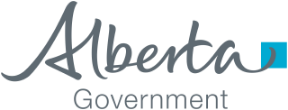Learning Action: Racism Timeline
Logistics
General Set-Up: The dates and events should be printed separately on large pieces of paper/cardboard (which can be laminated for repeated use). Some blank cards are included. Participants are divided into small groups. The “cards” can be distributed in one of three ways:
- The dates are already taped in order around the room/across a wall, etc. Each group is given a set of cards with events printed on them, which they must match up with the accurate date and tape below or above the corresponding date;
- Each group is given a set of cards, some with dates and some with events, that match internally within the set, and which they proceed to tape in the appropriate location on the wall;
- Each group is given a set of cards, some with dates and some with events, which do not necessarily match internally to the set; they need to discuss these and, moving about the room, work to match dates and events. In this case they may bump into other groups/or dates already “taken.”
Time Required: 45 mins. to 3 hrs. The debriefing/discussion should comprise the vast majority of facilitation time. That is, be sure to adapt the dates/events/timeline, even to fewer events or a shorter, more concentrated time span, so that you have adequate time to “correct” the timeline, and the majority of your allotted time is given to debriefing/discussion.
Number of Participants: Highly adaptable for small and large groups. Smaller groups can be given more questions, and larger groups fewer, for example. Based on our experience we would not recommend groups smaller than 6-8, nor groups larger than 40 (because of the challenges of debriefing with large groups).
Age of Participants: Highly adaptable to all ages. With younger participants, for example, you can choose events from a single/current decade. With older participants, you can choose events from a wider range or, for example, a specific period in their lives (e.g. WWII and post-WWII), about which they have specific, and valuable, knowledge and experience.
Materials:
- Paper/cardboard on which events and dates are written/printed and tape/tacks for posting answers. You can laminate the cards for re-use OR
- Smart Board – participants will touch the screen to indicate their answers.
- Handouts: Dates & Events
- Answer Key
Considerations of the Space
- This is a highly adaptable Action, which is one of its many strengths. A space with unfixed seating is ideal, so that participants can shift to work in small groups before posting their answers then create a large circle for debriefing/discussion. The space needs to be large enough for people to comfortably move around the perimeter.
The Action as described thus far assumes both physical mobility and visual ability, a preference for the materiality of the cards (something to hold and manipulate), and the visual impact of creating a physical timeline that makes the history of racism more “real.”
Adaptations to Address Challenges in Physical Ability
- In the case of mobility limitations: 1-3 people with no mobility concerns could be designated for collecting/posting the cards. Conversely, everyone could remain in a circle, the dates “set” chronologically in order around the circle, and people “pass” the events cards to the “correct” location. This will take longer, be a little louder, etc.
- In the case of visual limitations: in some cases, computer programs/laptops can assist individuals (though this requires the individual’s comfort with the technology); this can impact group dynamics, however. With a mature/older group, you could consider using fewer dates/events and conducting the action entirely orally.
- As well, some groups/contexts may find the use of “cards” outdated and/or may be more engaged with the Action if it incorporates technology. For example, the Action can be adapted for use on a Smart Board, where participants touch the board to match dates and events.
Adapting the Action
- Provide each participant with two blank cards (or blank spaces in the electronic version). Ask them to fill in their year of birth and a significant national/provincial/international event (relating to institutional racism) that happened during their year of birth and include this in the timeline.
- As above, but ask them to fill in the year of birth of a parent/family member from a previous generation and a significant event that happened during or around that year.
- Provide each participant with a recent date corresponding to an event on the Racism Timeline. Ask them to reflect on and note on the card where they were and what they were doing when the event took place. Were they aware of this event at the time? Participants post their cards on the timeline.
- As above, but ask participants to reflect on/note on the card what was happening in their home community at that time.
- In the spirit of collaborative learning, and if the context of your group allows, engage participants in researching specific events and developing a timeline together. This is very effective in a formal classroom setting (secondary or postsecondary) and incorporates research skills and consideration of the biases of research sources as well.
- Consider using fewer dates and events in order to address time concerns OR to allow deeper discussion of individual events and contexts.
- Rather than provide a multi-century overview, focus on a particular century or time period. Often, in Canada, white people believe that racism is only located in long-ago history, and not in the 20th century/early 21st century.
- Research and develop parallel timelines to demonstrate how racism has operated/operates globally (i.e. racism towards African-Americans and racism towards Indigenous North Americans). Expand (or develop parallel timelines) to include other forms of oppression (i.e. homophobia and racism) to demonstrate the interconnectedness of different forms of oppressions. Play with timelines/structure of “time” as not everyone perceives “time” in the same way, or in the Western, linear “way” (i.e. People of the Blackfoot Nation).
How the Facilitator Participates
In keeping with our philosophy of facilitation, and to demonstrate that these are systemic problems we are addressing, it is important for facilitators to demonstrate that we all have gaps in our knowledge. A collaborative way of doing this is to provide participants the opportunity to share their knowledge of specific events and dates and to “test” the knowledge of the facilitator. Examples:
- Each group is provided with a “Freebie.” Each group can choose one event and the facilitator must guess the corresponding date.
- Before correcting the timeline dates and discussing/debriefing, each group can provide one date and one event not on the timeline. These are collected and mixed up, and the facilitator tries to match the cards correctly.
Facilitating
- If you are doing this action in the traditional way (the way we have outlined), tape the dates around the room in chronological order before the session begins.
- Do not “give away” the goal of this facilitation (i.e. by saying “today we are going to explore the gaps in our knowledge”); rather, let the group discover their own gaps through the process of the Learning Action. You can address the goals/process in the debriefing session.
- Organize your group(s), give the instructions (including how much time they have), and get learning!
- Once the timeline has been completed, invite participates to share their answers.
- When all participant answers have been provided, identify and discuss any errors that may have arisen. This discussion should include the implications of the knowledge gaps.
Discussion/Debriefing
- Begin the debrief by going through the events and matching them with the appropriate dates depending on how you have used the action. If you have the dates and events taped on the wall, it helps to have a couple of participant volunteers to help move the events to the correct dates.
- When going through the events, facilitators should be prepared to provide a context and/or a bit more detail for many of the events. This requires facilitators researching the events before the session.
- Either while correcting events and dates or afterwards, facilitators and participants can share how their or their ancestors’ history may or may not be connected to the events. Even if participants are not connected directly to events they might share what they or their ancestors were doing during the time of the event took place. What was their or their ancestors’ life like at that time of the event, and how different was it from the individuals oppressed by the events? How did the oppression of certain groups affect others, participants or their ancestors?
- It is important to recognize that we are all participants in “history.” Participants (and/or family members) may have experienced racism as well as the specific events from the timeline, evoking painful memories/anger/sadness etc. For other participants, these events may be new to them. It is important to be aware of both perspectives. Moreover, we are encouraging a process by which all participants improve their awareness of how we all participate in history, whether we are complicit, apathetic or ignorant. History is not a “fact,” but a process we can and do influence. In other words, your debriefing will address how this Learning Action is not merely about accurate information.
Responses
Based on our experience, the following are some of the reactions we have experienced/observed in participants; it is useful to be aware of these possible responses:
- Laughter (Discomfort of participants from not knowing about particular histories)
- Self-recrimination and shock: “Why didn’t I know this?”
- Distancing of selves from “history” or “past”: “I’m not responsible for what happened in the past.” “I’m not responsible for what my ancestors did.” ( Whiteness)
- Empowerment for those seeing their histories (finally) represented
- Individualism and defensiveness: “We all have our own stories and mine is just as important as anyone else’s.”
- Reassertion of common myths and stereotypes about Canada. (Canada as a nice, tolerant and multicultural nation)
- Anger and confusion at feeling overwhelmed by the volume of material
- Anger and frustration at what they were not taught, sense of amnesia-they might have learned about a particular event but cannot recall it well
- Frustration at “negative” view of history
- The room might feel “heavy” as participants realize that although they are not responsible for the past, they are responsible for their actions in the future
Further Work:
- Research a particular event in detail
- Research what was happening in your own hometown
- Research the “positives” (Solidarity, resistance, white allies)
- Ask family members if they remember the event
Recommended Readings:
- The Colour of Democracy: Racism in Canadian Society by Frances Henry & Carol Tator (Click here to see an excerpt from the introduction)
- National Dreams: Myth, Memory, and Canadian History by Daniel Francis
- Imagined Communities: Reflections on the Origin and Spread of Nationalism by Benedict Anderson (Click here to see Anderson’s full book in PDF form)



